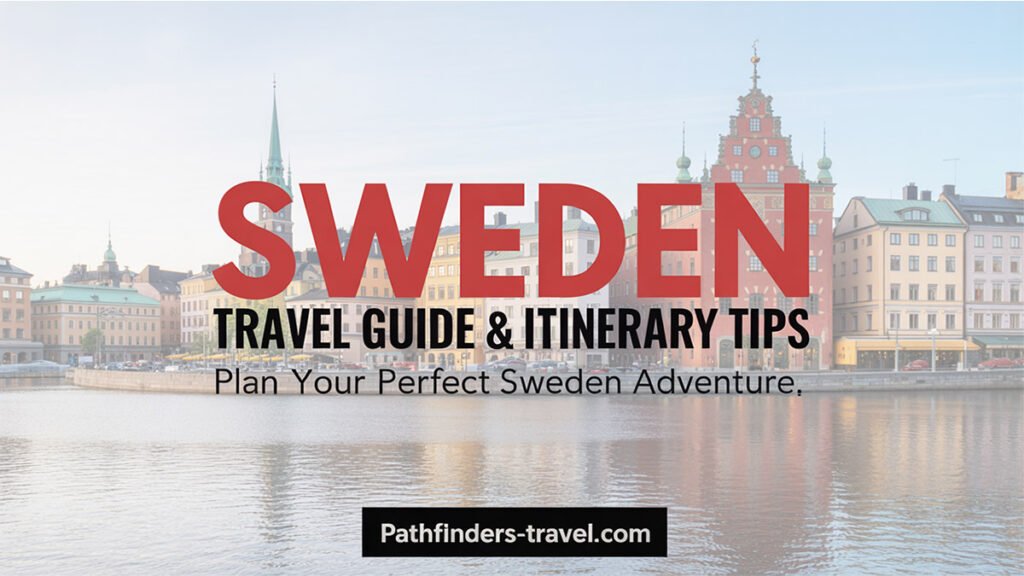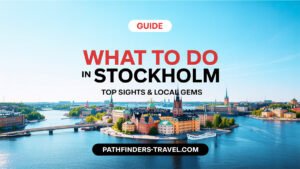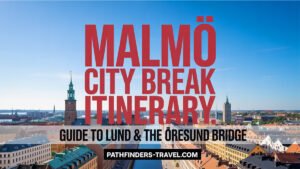Estimated reading time: 19 minutes
Key Takeaways
- Sweden offers an exceptional blend of modern cities, ancient historical sites, and pristine wilderness that suits various travel preferences.
- The best time to visit depends on your interests: summer for Midnight Sun and outdoor activities, winter for Northern Lights and snow experiences.
- A comprehensive two-week Sweden itinerary should include Stockholm, the archipelago, Gotland, Southern Sweden, Western Sweden, and Northern Sweden.
- Sweden is largely cashless, so prepare to use cards for most transactions and embrace local customs like “fika” (coffee breaks).
- Transportation is efficient throughout the country, with excellent train connections between major cities and ferry services to islands.
Table of Contents
- Introduction
- Best Time to Visit Sweden
- Planning Your Sweden Trip
- Sample Two-Week Sweden Itinerary
- Sweden Travel Tips
- Frequently Asked Questions about Sweden Travel
Introduction
Sweden stands as one of Northern Europe’s most captivating destinations, blending vibrant city life with untouched wilderness in perfect harmony. This Nordic nation offers travelers a unique mix of historical depth and natural beauty that few countries can match. From the medieval cobblestone streets of Stockholm’s Gamla Stan to the rugged Arctic landscapes of Lapland, Sweden presents an extraordinary range of experiences for every type of traveler.
This comprehensive Sweden travel guide aims to help you navigate this fascinating country, whether you’re drawn to its sophisticated urban centers, coastal archipelagos, or pristine forests. With diverse regions spanning from the Baltic shores in the south to the Arctic Circle in the north, Sweden’s geographic variety is matched only by its rich cultural heritage and innovative spirit.
Sweden’s appeal lies in its remarkable contrasts. You can explore vibrant city districts in Stockholm with cutting-edge design and technology, then quickly escape to tranquil natural settings where silence and solitude reign. The country’s historical landmarks, including medieval castles, Viking ruins, and traditional wooden villages, tell the story of a nation that has shaped Scandinavian history for centuries. [SOURCE]
If you’re wondering how to plan a Sweden trip that captures the essence of this remarkable country, this guide will walk you through everything from the best times to visit to practical travel tips that will enhance your Swedish adventure.
Want to see this for yourself? Click here to jump to the video in UHD 4K Resolution.
Best Time to Visit Sweden by Season and Activities
Understanding Sweden’s distinct seasonal variations is crucial for planning your perfect trip. Each season transforms the country in unique ways, offering dramatically different experiences throughout the year. [SOURCE]
Summer (June to August): Land of the Midnight Sun
Summer stands as the most popular time to visit Sweden, and for good reason. With temperatures typically ranging from 15-25°C (59-77°F), the weather is pleasantly warm without becoming uncomfortable. In Stockholm and southern regions, you’ll enjoy long, sunny days perfect for exploring cities, hiking through national parks, or island-hopping across the archipelagos.
The further north you travel, the more remarkable the daylight phenomenon becomes. Above the Arctic Circle in places like Kiruna, the Midnight Sun creates a surreal experience where the sun never fully sets for several weeks. This endless daylight opens up possibilities for extended outdoor adventures and creates a magical atmosphere unlike anywhere else.
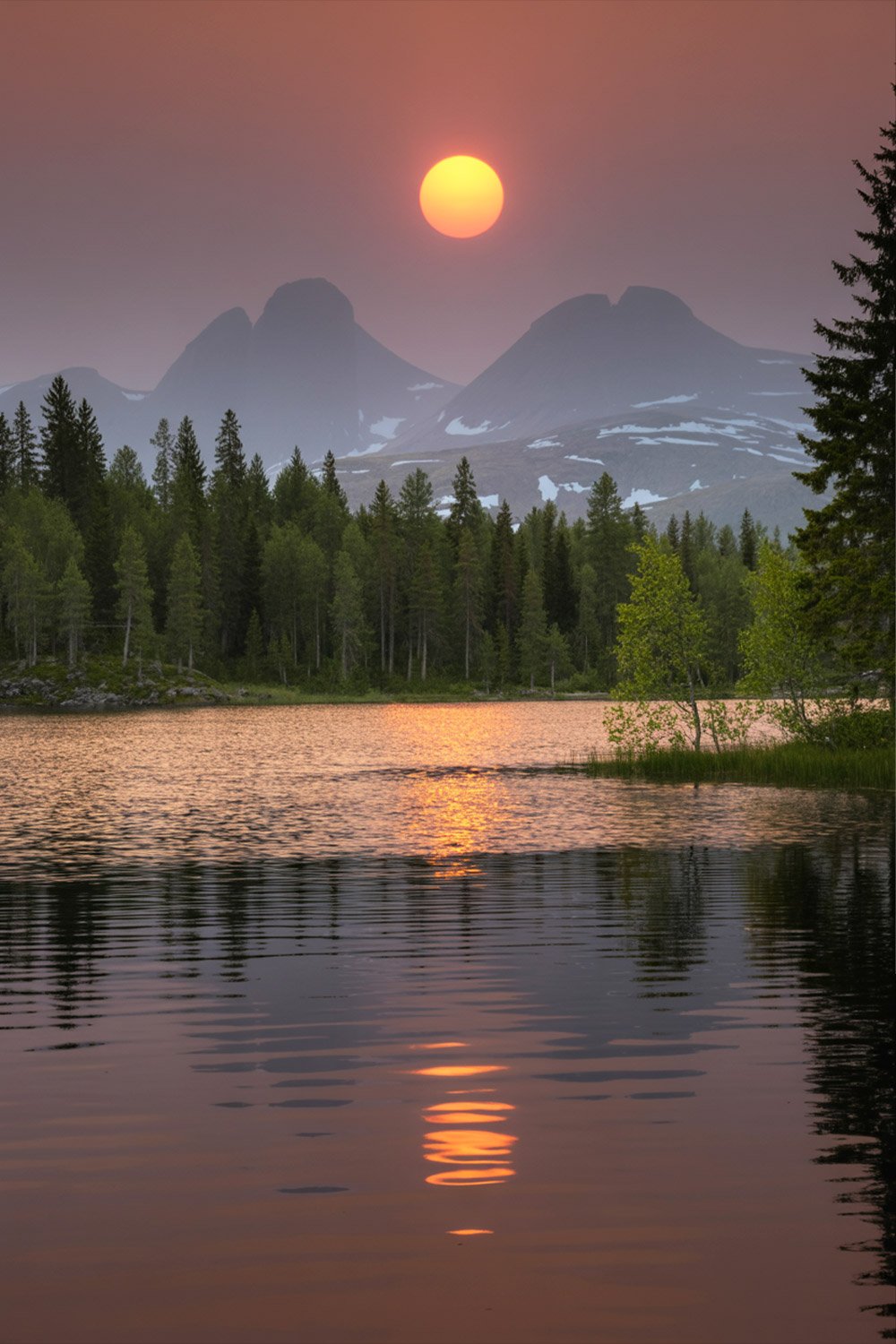
Summer also brings Sweden’s cultural calendar to life with festivals and celebrations. The Midsummer Festival in late June stands as the most important traditional celebration, featuring maypole dancing, flower garlands, and festive meals in a joyful atmosphere that showcases Swedish traditions at their most vibrant. [SOURCE]
Winter (December to March): Northern Lights and Winter Wonderland
Winter transforms Sweden into a snow-covered landscape of extraordinary beauty and unique experiences. While southern areas experience milder conditions with temperatures around freezing, northern Sweden plunges into a true Arctic winter with temperatures regularly dropping below -10°C (14°F).
This season offers attractions you simply can’t experience any other time of year. The Northern Lights (Aurora Borealis) dance across dark Arctic skies, creating natural light shows of green, purple, and blue. Abisko National Park in Swedish Lapland is renowned as one of the world’s best spots for aurora viewing thanks to its clear skies and minimal light pollution.
Winter activities abound throughout the country, from dog sledding and snowmobiling to ice fishing and cross-country skiing. The famous Ice Hotel in Jukkasjärvi offers a once-in-a-lifetime opportunity to sleep in a room carved entirely from ice and snow, complete with stunning artistic details that change yearly. [SOURCE]
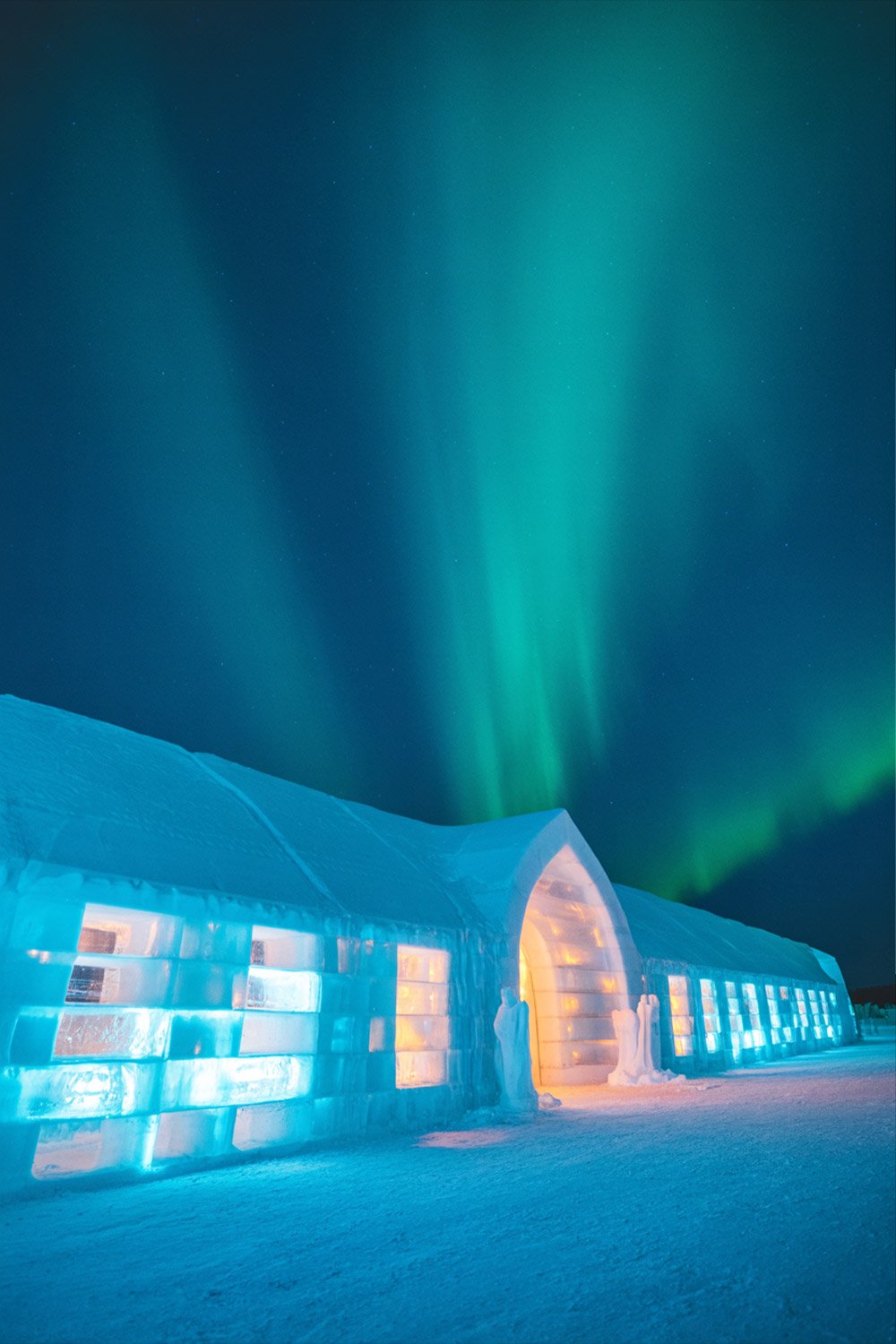
Spring (April to May) and Fall (September to November): Shoulder Seasons
These transitional seasons offer their own distinct charm with fewer tourists and changing landscapes. Spring brings blooming wildflowers and gradually warming temperatures, while fall delivers spectacular foliage as forests transform into vibrant reds and golds.
Both seasons are excellent for budget-conscious travelers, with lower accommodation rates and more availability at popular sites. The weather can be unpredictable, so packing layers is essential, but the trade-off comes in the form of more authentic local experiences and photography opportunities in rapidly changing natural settings.
When Should You Visit?
The best time to visit Sweden ultimately depends on what experiences you prioritize:
- For outdoor adventures, midnight sun, and swimming: Summer (June-August)
- For Northern Lights and winter sports: Winter (December-March)
- For fall foliage and mushroom foraging: September-October
- For budget travel with moderate weather: May and September
Whatever season you choose, Sweden’s natural beauty and cultural richness ensure a memorable experience throughout the year.
How to Plan a Sweden Trip: Transport, Visa, and Budget Guide
How to Plan a Sweden Trip: Step-by-Step Guide
Planning a successful trip to Sweden requires thoughtful preparation to make the most of this diverse Nordic nation. Here’s a comprehensive approach to organizing your Swedish adventure:
1. Research and Determine Your Focus
Begin by identifying what aspects of Sweden interest you most:
- Urban exploration: Stockholm, Gothenburg, Malmö
- Natural wonders: Archipelagos, national parks, Arctic landscapes
- Historical sites: Medieval towns, castles, Viking heritage
- Cultural experiences: Sami traditions, Swedish design, culinary adventures
Use reliable resources like [SOURCE] and guidebooks to research specific attractions that align with your interests.
2. Decide When to Go
As covered in the previous section, your timing significantly impacts your experience. Consider your activity preferences, budget constraints, and tolerance for various weather conditions when selecting your travel dates.
3. Arrange Transportation
Getting to and around Sweden offers several options:
International Travel:
- Air: Major international airports include Stockholm Arlanda (ARN), Gothenburg Landvetter (GOT), and Malmö (MMX). Direct flights connect from many European cities and some intercontinental destinations.
- Train: High-speed rail connections from Copenhagen and other neighboring countries provide scenic and sustainable alternatives to flying.
- Ferry: Services from Finland, Estonia, Latvia, Poland, and Germany offer an interesting way to arrive, especially if incorporating Sweden into a broader Baltic tour.
Domestic Transportation:
- Trains: Sweden’s extensive rail network operated by SJ (Swedish Railways) connects major cities with comfortable, efficient service. The X2000 high-speed trains are particularly recommended for longer journeys.
- Car rental: Driving offers flexibility, especially for exploring rural areas and national parks. Roads are well-maintained, and traffic is generally light outside major cities.
- Domestic flights: When covering long distances (particularly to northern Sweden), internal flights save considerable time.
- Ferries: Essential for visiting islands like Gotland and navigating the archipelagos.
- Public transport: Cities have excellent bus and metro systems, with Stockholm’s subway doubling as the “world’s longest art gallery.” [SOURCE]
4. Understand Visa Requirements
Sweden is part of the Schengen Area, which affects entry requirements:
- EU/EEA citizens: Can enter freely with a valid ID card or passport.
- Non-EU visitors (including Americans, Canadians, Australians): Can typically stay up to 90 days without a visa but require a valid passport.
- Other nationalities: May need to apply for a Schengen visa in advance. Check requirements with the Swedish embassy or consulate in your country.
5. Book Accommodations
Sweden offers diverse lodging options to suit various preferences and budgets:
- Hotels: Range from international chains to boutique properties. Many include breakfast buffets featuring traditional Swedish items.
- Hostels: Clean, safe, and often stylish with private room options available.
- Vacation rentals: Particularly good for families or longer stays.
- Rural cottages: Traditional red wooden cottages (stugor) offer authentic experiences in countryside settings.
- Unique stays: Consider the Ice Hotel, treehouses in Harads, or floating hotels for memorable experiences.
Book well in advance for summer travel, especially in popular destinations like Stockholm’s archipelago or during major festivals. [SOURCE]
6. Prepare for Local Customs
Understanding Swedish customs enhances your experience:
- Fika: The coffee break ritual is an essential part of Swedish culture, typically featuring coffee and pastries like cinnamon buns (kanelbullar) or cardamom buns (kardemummabullar).
- Cashless society: Sweden is at the forefront of going cashless. Credit/debit cards are accepted almost everywhere, even for small purchases. Some establishments may not accept cash at all.
- Removing shoes: When entering someone’s home, it’s customary to remove your shoes.
- Punctuality: Swedes value timeliness. Being on schedule for appointments and reservations is expected.
7. Budget Planning
Sweden can be expensive compared to many destinations, but thoughtful planning helps manage costs:
- Accommodation: $100-200/night for mid-range hotels; hostels from $30/night
- Food: $15-20 for lunch specials; $25-40 for dinner at mid-range restaurants
- Transportation: Regional train tickets $20-50; city public transport passes $10-15/day
- Activities: Museum entries $10-20; boat tours $25-40
Money-saving tips include taking advantage of lunch specials, using city passes for attractions, and considering self-catering options with groceries from supermarkets like ICA or Coop.
Sweden Itinerary 2 Weeks: Cities, Nature, and Regional Highlights
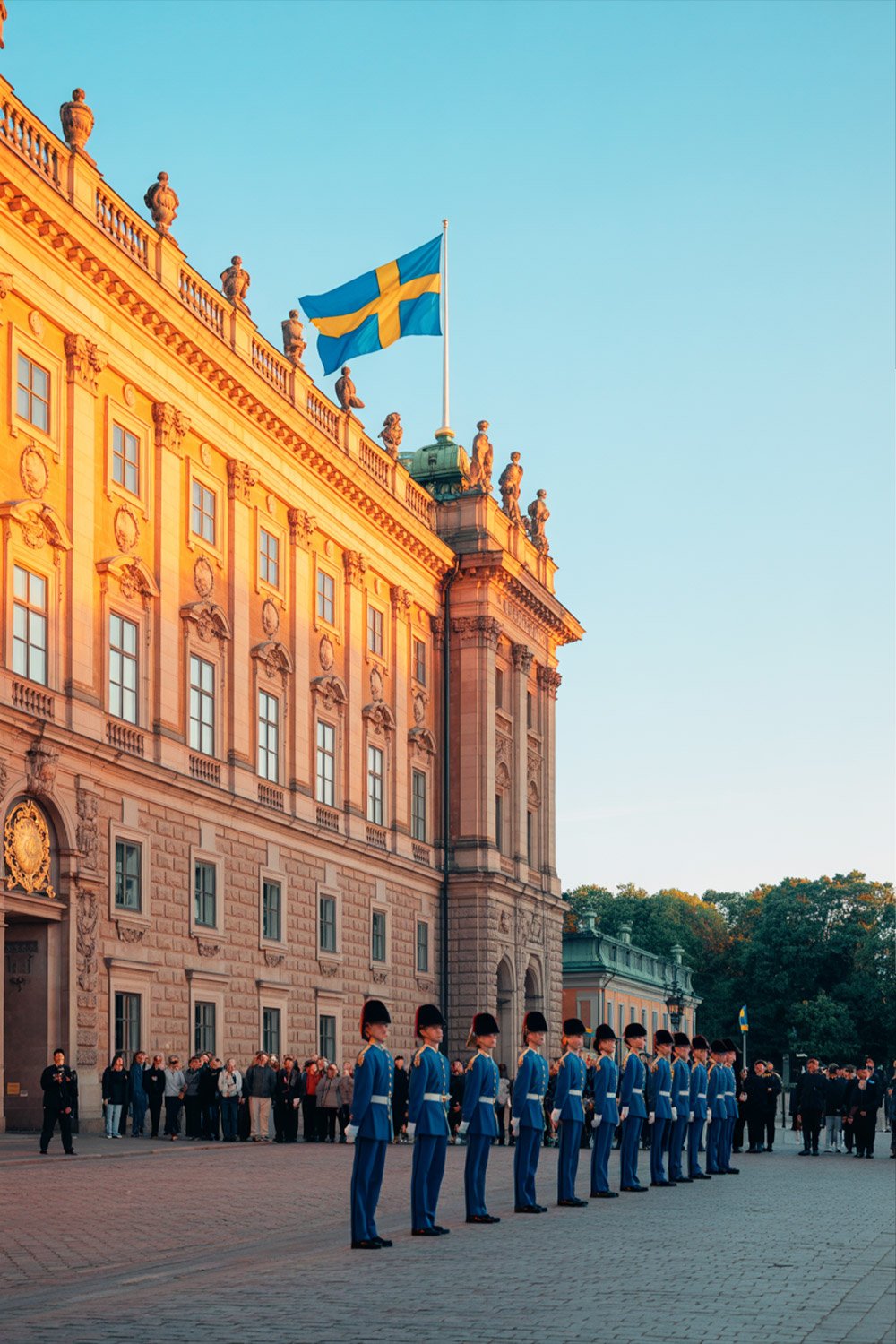
Sweden Itinerary 2 Weeks: The Complete Experience
This comprehensive two-week itinerary allows you to experience Sweden’s remarkable diversity, from vibrant cities to serene wilderness and coastal charm. Adjust the pace according to your travel style and preferences.
Days 1-3: Stockholm and Surroundings
Day 1: Stockholm’s Historic Center
- Begin in Gamla Stan (Old Town), exploring its medieval streets, colorful buildings, and historic squares like Stortorget.
- Visit the Royal Palace to witness the changing of the guard and explore the royal apartments.
- Discover Stockholm Cathedral and the Nobel Museum to understand Sweden’s contributions to science and culture.
- End with dinner at one of Gamla Stan’s traditional restaurants serving Swedish classics like meatballs with lingonberries.
Day 2: Museum Island and Modern Districts
- Spend the morning at the Vasa Museum on Djurgården island, housing the impressive 17th-century warship that sank on its maiden voyage.
- Visit nearby Skansen, the world’s oldest open-air museum showcasing traditional Swedish buildings and customs.
- Explore Södermalm, Stockholm’s trendy southern district, with its hip boutiques, cafes, and panoramic views of the city from Monteliusvägen path.
- Experience a traditional fika break at one of the district’s cozy cafes.
Day 3: Stockholm Artistry and Architecture
- Take a guided tour of Stockholm’s subway art – many stations feature incredible installations making it “the world’s longest art gallery.”
- Visit Fotografiska, the contemporary photography museum with changing exhibitions and rooftop dining with city views.
- Explore the modern architecture of Norrmalm and shop along pedestrian-friendly Drottninggatan.
- Take an evening boat tour through Stockholm’s waterways for a different perspective of the city.
Days 4-5: Stockholm Archipelago
The Stockholm Archipelago consists of over 30,000 islands and islets, each with its own character. This section of your journey offers a perfect contrast to urban exploration.
Day 4: Island Exploration
- Take a ferry from Stockholm to Vaxholm, the “capital” of the archipelago, and visit its coastal fortress.
- Continue to Grinda island for hiking trails and swimming opportunities in summer.
- Enjoy fresh seafood at a waterside restaurant.
- Consider overnight accommodation on one of the islands for the full archipelago experience.
Day 5: Deeper Archipelago Adventures
- Visit the outer archipelago islands like Sandhamn or Utö for more remote experiences.
- Try kayaking between islands or fishing in the Baltic waters.
- Explore traditional red wooden cottages and fishing villages that exemplify archipelago life.
- Return to Stockholm in the evening to prepare for the next leg of your journey.
The Stockholm Archipelago offers countless options for day trips and extended stays. Many travelers find island hopping through the archipelago to be among their most memorable Swedish experiences. [SOURCE]
Days 6-7: Gotland and Visby
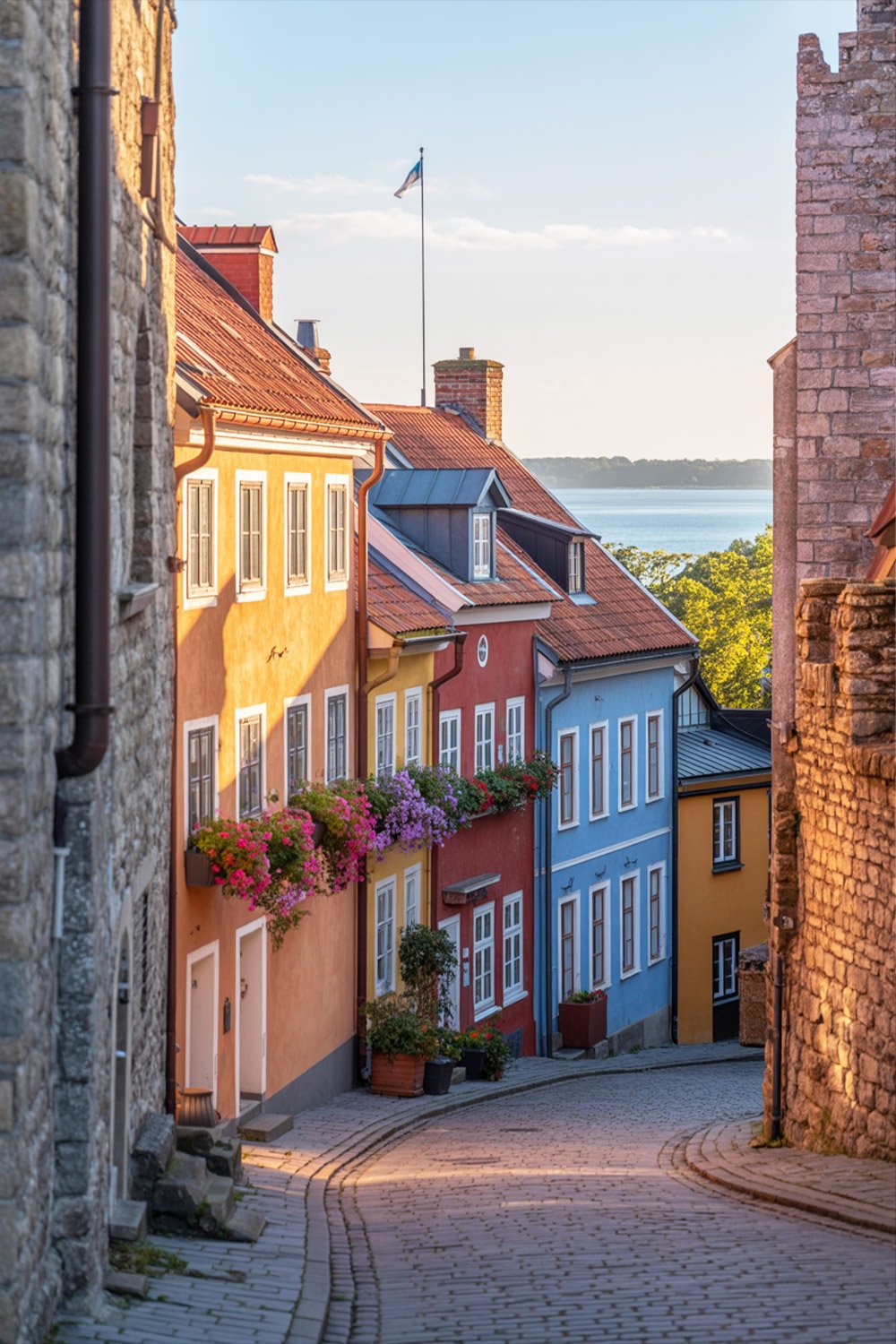
Day 6: Journey to Medieval Visby
- Take a morning flight (70 minutes) or ferry (3.5 hours) from Stockholm to Gotland, Sweden’s largest island.
- Explore Visby, a UNESCO World Heritage site enclosed by impressive medieval walls.
- Wander through its cobblestone streets, admiring preserved medieval architecture and the ruins of ancient churches.
- Visit Gotland Museum to see Viking artifacts and the island’s unique history.
Day 7: Gotland’s Natural Wonders
- Rent a bicycle or car to explore Gotland’s countryside, including distinctive limestone formations called raukar.
- Visit Fårö island, connected to Gotland by ferry, known for its unique landscape and association with filmmaker Ingmar Bergman.
- Explore prehistoric sites and fishing villages along the coast.
- Return to Visby for a final evening enjoying its medieval atmosphere.
Days 8-9: Southern Sweden
Day 8: Kalmar and Öland
- Fly or take a ferry back to the mainland, then travel to Kalmar, home to one of Sweden’s best-preserved Renaissance castles.
- Explore Kalmar Castle and its surrounding park.
- Cross the 6km Öland Bridge to visit Sweden’s second-largest island.
- Visit Borgholm Castle ruins on Öland and explore the island’s unique limestone landscapes.
Day 9: Malmö and the Öresund Region
- Travel to Malmö, Sweden’s third-largest city and a hub of contemporary design and multiculturalism.
- Visit the Turning Torso, Scandinavia’s tallest building and an architectural landmark.
- Explore Malmö Castle and the charming historic district around Lilla Torg square.
- Consider a quick trip across the Öresund Bridge to Copenhagen if time allows, making this a two-country day.
Days 10-11: Western Sweden
Day 10: Gothenburg City Exploration
- Travel to Gothenburg, Sweden’s second-largest city with a distinctive west coast character.
- Explore the historic Haga district with its wooden houses, cafes, and boutiques.
- Visit Liseberg amusement park (in season) or the impressive Gothenburg Museum of Art.
- Enjoy the city’s renowned seafood at the Fish Church (Feskekörka) market hall or at a harborside restaurant.
Day 11: West Coast Charm
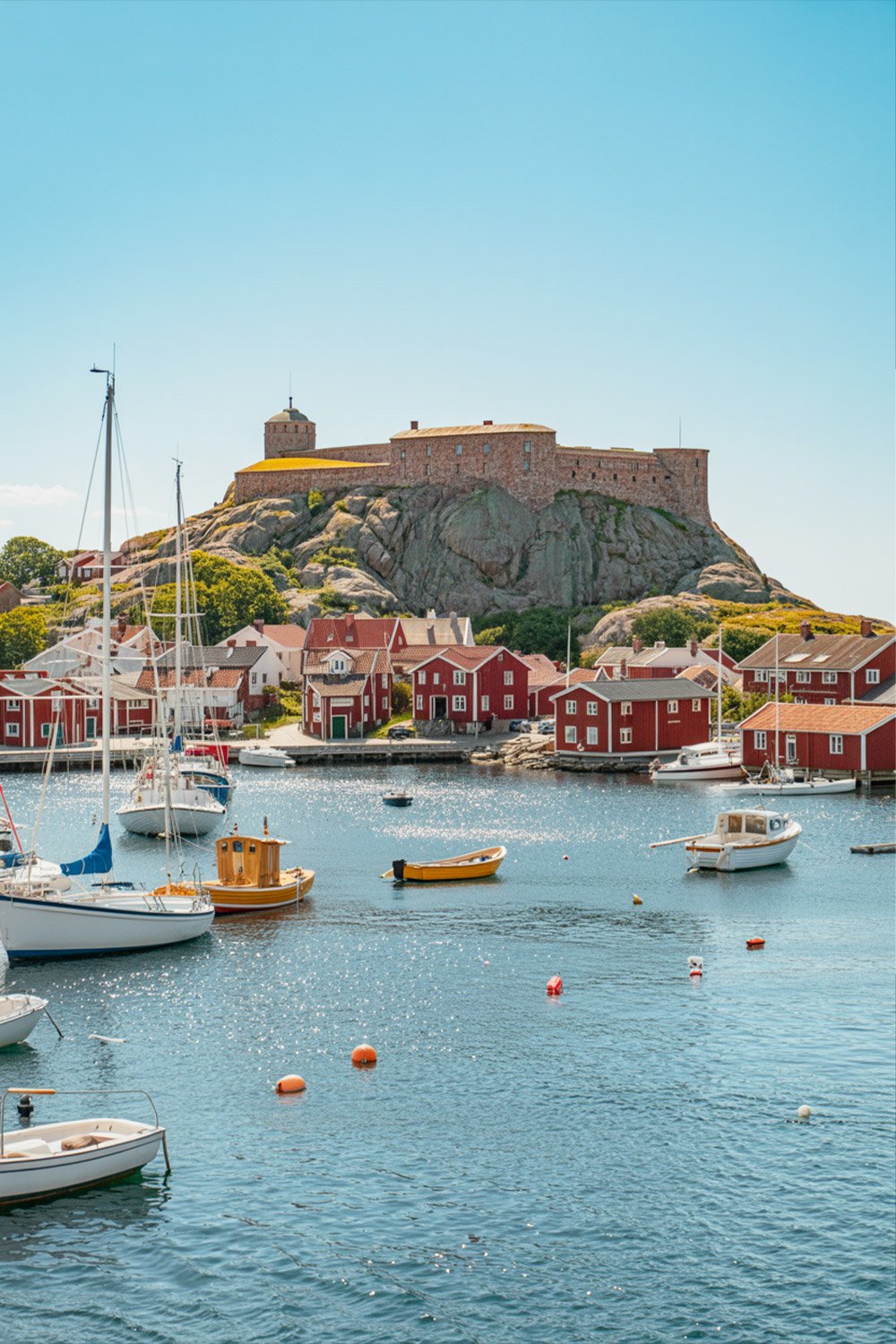
- Take a day trip to explore the Bohuslän coast north of Gothenburg.
- Visit Marstrand island with its impressive Carlsten Fortress and sailing heritage.
- Continue to Smögen to stroll along its famous wooden boardwalk (Smögenbryggan) lined with charming red and white fishing huts now housing shops and restaurants.
- Return to Gothenburg or stay overnight in a coastal village.
The western region offers a different perspective on Swedish coastal life. Gothenburg’s vibrant culinary scene and relaxed atmosphere provide a perfect counterpoint to Stockholm’s grandeur.
Days 12-14: Northern Sweden
Day 12: Journey to Swedish Lapland
- Fly to Kiruna in Swedish Lapland, the northernmost town in Sweden.
- Visit the Kiruna Church, an architectural marvel inspired by Sami traditions.
- Learn about Sami culture at Nutti Sámi Siida museum and reindeer park.
- In winter, check in to the famous Ice Hotel in nearby Jukkasjärvi for a night in a room carved from ice (or visit the year-round ICEHOTEL 365 in summer).
Day 13-14: Arctic Adventures

- In winter: Experience dog sledding, snowmobiling, or ice fishing. Search for the Northern Lights in the evening, especially from Abisko National Park, known for its clear skies.
- In summer: Hike under the Midnight Sun, try river rafting, or begin the famous Kungsleden (King’s Trail) trek.
- Visit Abisko National Park regardless of season for its stunning mountain scenery.
- On your final day, fly back to Stockholm for departure or extend your stay in the capital.
This far north experience provides a complete contrast to southern Sweden, showcasing the country’s remarkable geographic and cultural diversity. Scandinavian Arctic regions offer some of Europe’s last true wilderness areas and unique cultural experiences.
This two-week itinerary covers Sweden’s highlights while balancing urban exploration, cultural experiences, and natural wonders. Adjust the pace according to your interests, perhaps spending more time in the archipelago or Arctic regions if nature is your priority, or focusing more on cities if you’re drawn to design, architecture, and museums.
Essential Sweden Travel Tips: Culture, Money, and Safety
Essential Sweden Travel Tips for a Smooth Journey
Making the most of your Swedish adventure requires some practical knowledge about local customs, transportation, and daily practicalities. These tips will help you navigate Sweden like a local:
Transportation Tips
- Public transport reliability: Swedish public transportation runs with exceptional punctuality. Download local transport apps like SL (Stockholm), Västtrafik (Gothenburg), or the national train operator SJ’s app for real-time updates and mobile tickets.
- Regional train passes: If traveling extensively by train, investigate the Eurail Sweden Pass or regional passes that offer unlimited travel for a set period.
- Stockholm transport: Purchase an SL Access card for Stockholm’s public transport, which covers buses, trams, metro, and some ferries. The 24-hour, 72-hour, or 7-day passes offer good value.
- Taxis: Licensed taxis are safe but expensive. Look for fixed-price options (fastpris) when available, especially for airport transfers. Ride-sharing services like Uber operate in larger cities.
- Cycling: Many Swedish cities are bike-friendly with extensive cycling infrastructure. Bike rentals and city bike schemes are available in major urban areas.
Money and Budgeting
- Cashless transactions: Sweden is among the world’s most cashless societies. Credit and debit cards (Visa/Mastercard) are accepted almost everywhere, even for small purchases.
- Currency: The Swedish Krona (SEK) is the official currency. While you may not need much cash, having a small amount for emergencies is advisable.
- Tipping culture: Service charges are typically included in restaurant bills. Additional tipping is not expected but rounding up or adding 5-10% for exceptional service is appreciated.
- Budget-saving meals: Look for “dagens rätt” (daily special) at restaurants for lunch, typically including a main course, salad, bread, and coffee/tea at a fixed price (120-150 SEK).
- Tax refunds: Non-EU visitors making purchases over 200 SEK may be eligible for VAT refunds. Ask for a tax-free form when shopping.
Connectivity and Communication
- Wi-Fi access: Free Wi-Fi is widely available in hotels, cafes, restaurants, and public spaces. Most accommodations offer reliable internet connections.
- SIM cards: Purchase local SIM cards from providers like Telia, Telenor, or Comviq at convenience stores, supermarkets, or airport kiosks. Coverage is excellent throughout the country.
- Language: While Swedish is the official language, English proficiency is among the highest in the world. Most Swedes speak excellent English, especially in urban areas and tourist destinations.
Cultural Etiquette
- Personal space: Swedes generally appreciate personal space and may seem reserved initially. Loud conversations in public places may draw disapproving looks.
- Queuing: Orderly queuing is taken seriously. In some establishments, you’ll need to take a number from a ticket machine and wait your turn.
- Sustainability: Environmental consciousness is deeply ingrained in Swedish culture. Recycling facilities are ubiquitous, and sustainable practices are widely expected.
- Shoes off: When visiting a Swedish home, always remove your shoes at the entrance.
- Punctuality: Being on time is considered very important. Arrive at the scheduled time for appointments, tours, and restaurant reservations.
Food and Dining
- Traditional foods: Try Swedish specialties like köttbullar (meatballs), gravlax (cured salmon), smörgåstårta (sandwich cake), and kanelbullar (cinnamon buns).
- Fika culture: Participate in the Swedish tradition of fika – coffee breaks with pastries that are an essential part of daily life, typically enjoyed mid-morning and mid-afternoon.
- Alcohol regulations: Alcohol stronger than 3.5% is only sold in government-run Systembolaget stores with limited opening hours (not Sundays). Plan purchases accordingly.
- Water quality: Tap water throughout Sweden is clean and safe to drink. Bring a reusable water bottle to fill up rather than buying bottled water.
Safety Tips
- General safety: Sweden ranks among the safest countries in the world. Standard precautions against pickpocketing in tourist areas are usually sufficient.
- Emergency number: 112 is the emergency number for police, ambulance, and fire services.
- Weather preparedness: Swedish weather can change rapidly. Dress in layers and be prepared for rain, especially when exploring outdoor areas.
- Winter safety: If visiting in winter, take ice conditions seriously. Sidewalks can be slippery, and appropriate footwear with good grip is essential.
- Outdoor safety: When hiking or exploring wilderness areas, inform someone of your plans and expected return time, especially in remote regions like Lapland.
Frequently Asked Questions about Sweden Travel
What is the best time to visit Sweden for travel and activities?
The best time to visit Sweden depends on what you want to experience. For long summer days, outdoor festivals, and island-hopping, visit between June and August. For Northern Lights and winter sports, December to March is ideal. May and September offer mild weather with fewer crowds and lower costs, while autumn brings colorful foliage and mushroom foraging opportunities.
How do you travel around Sweden and what are the best transportation options?
Traveling around Sweden is straightforward thanks to its efficient public transport. High-speed trains like the X2000 connect major cities, while regional trains, metros, buses, and ferries serve towns and islands. Domestic flights cover long distances to Lapland quickly, and ferries connect Gotland and the archipelagos. The Øresund Bridge makes it easy to combine Sweden with a trip to Copenhagen, Denmark.
How many days do you need for a Sweden itinerary?
A 10–14 day Sweden itinerary allows you to combine Stockholm, the archipelago, Gotland, southern and western cities, and Lapland. Shorter itineraries of 7–10 days work best if you focus on one or two regions, such as Stockholm with the archipelago or Gothenburg with the west coast. This approach ensures deeper exploration without rushing.
Do I need a visa to travel to Sweden?
Sweden is part of the Schengen Area. Citizens of the EU/EEA can travel freely with an ID or passport. Travelers from the U.S., Canada, Australia, and many other countries can visit visa-free for up to 90 days within 180 days. Other nationalities may require a Schengen visa. Passports should be valid for at least three months beyond your departure date from the Schengen zone.
Is Sweden safe for tourists and what precautions should I take?
Sweden is considered one of the safest countries in Europe for tourists. Standard precautions are recommended: safeguard valuables, be alert in crowded areas, and use travel insurance for peace of mind. Emergency services can be reached by dialing 112. In winter, prepare for icy conditions with proper footwear, and in rural Lapland, let someone know your hiking or outdoor plans.

